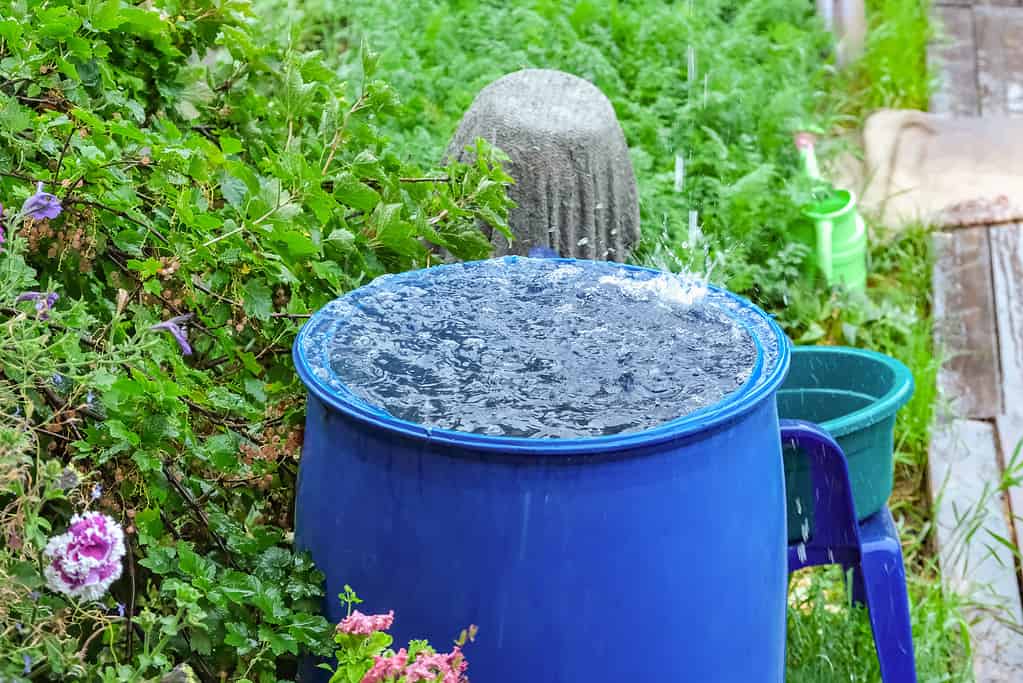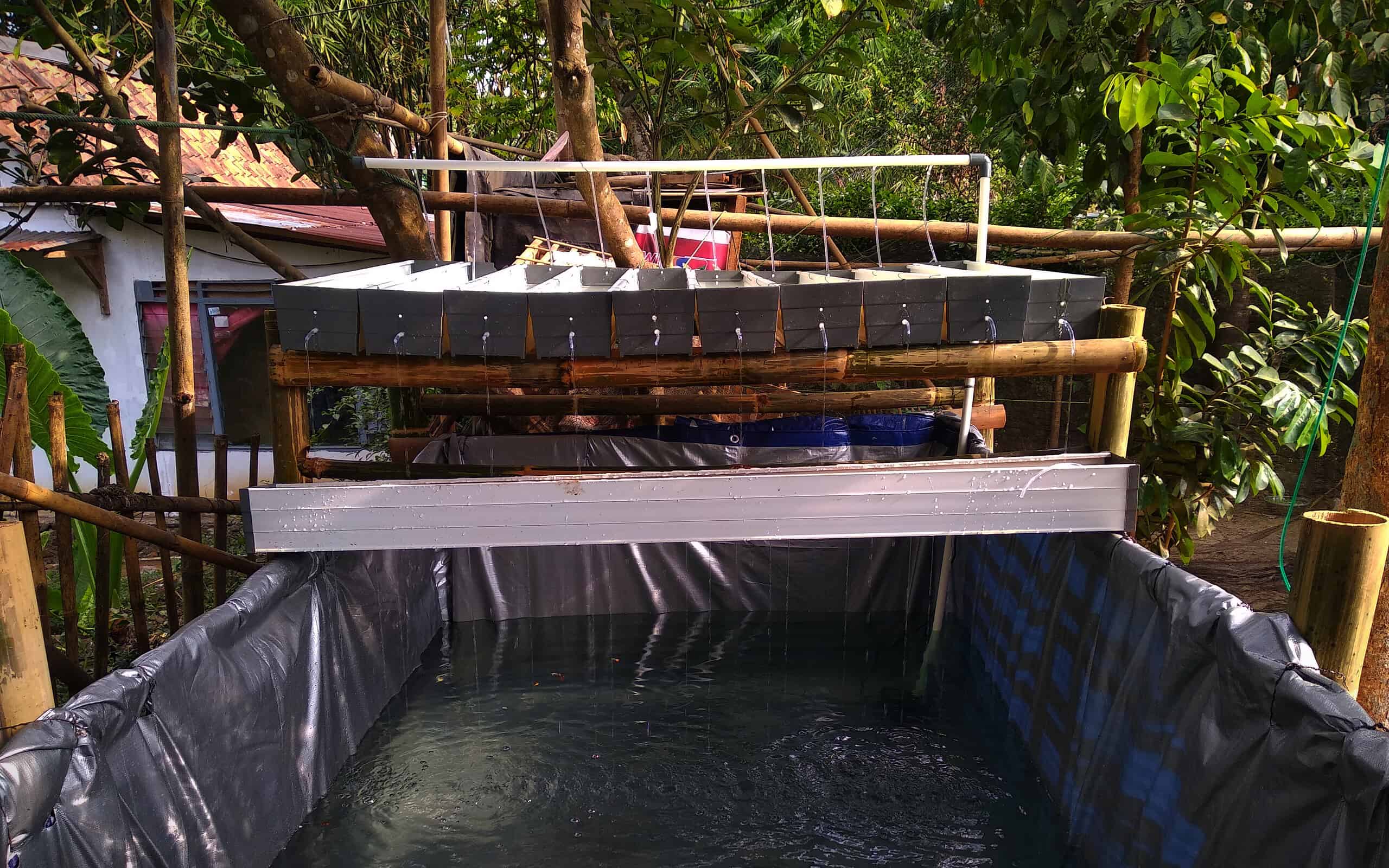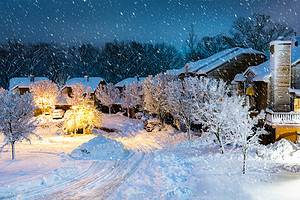Rainwater harvesting, the practice of collecting rainwater for later use, has gained popularity as people seek sustainable solutions. But is it legal? The answer varies by location. Some places encourage it, while others have regulations in place to control the practice.
So, is rainwater harvesting legal, and what can you do with all that captured rain? These questions are swirling around the minds of many environmentally conscious individuals. In this article, we dive into the legality of rainwater harvesting and explore various creative ways to put that precious rainwater to good use.
What is Rainwater Harvesting?
The term “rainwater harvesting” refers to the practice of capturing rainwater for later use. Gathering rainwater for later use requires directing it from catchment areas or roofs into storage tanks or reservoirs.
The first step is to set up a system to collect rainwater from a roof or other surface and put it in a tank. Guttering, downspouts, and pipelines all serve this purpose. Tanks or cisterns are used to hold the filtered rainwater that has been collected.
Irrigation, gardening, landscaping, and even inside usage like flushing toilets and doing laundry are just some of the many ways that rainwater may be put to good use. In areas prone to water shortage or drought, this is a sustainable and environmentally favorable alternative to using just treated municipal water sources.
Rainwater harvesting can lessen the demand on public water systems and, as a result, lower water costs. Also, it can aid in controlling stormwater runoff, which means less flooding and less erosion.
Water conservation is facilitated by collecting rainwater, and the energy and resources needed to clean and distribute that water are greatly reduced. It is an environmentally responsible practice that contributes to sustainability efforts while providing a valuable source of clean water for various needs.
Is Rainwater Harvesting Legal?

Harvesting rainwater is legal for the most part, but make sure you know your local laws and requirements for doing so.
©Theron Stripling III/Shutterstock.com
Even though collecting rainwater for later use is permitted across the United States, doing so is subject to a tangled web of restrictions that varies from state to state and even municipality to municipality. When it comes to rainwater collection, some states have strict requirements while others have fewer. Typical concerns addressed by these rules include water quantity, quality, and ownership.
States like Colorado and Texas, for instance, have long-standing regulations in place that promote rainwater gathering and authorize its use for non-potable uses like irrigation and landscaping. When it comes to collecting rainwater for domestic use, however, stricter laws apply in other places like Utah.
In contrast, rainwater collecting has been adopted as a sustainable water management strategy in many nations throughout the world. Rainwater collection, for instance, is commonplace in Australia and frequently rewarded by the government. Rainwater harvesting is promoted in several regions of Germany for both domestic and industrial purposes.
While rainwater collection is generally permitted across the country, local ordinances and policies can vary widely. Before installing a rainwater harvesting system, you need to find out the relevant legislation in your area and ensure you comply with them. In contrast, in many other nations, collecting rainwater is not only sanctioned but also encouraged as a method of water conservation.
Different Ways To Properly Use Rainwater
1. Gardening and Landscape Irrigation
Rainwater collection is a useful resource for irrigation in gardens and landscaping. This environmentally responsible behavior not only helps plants maintain health and vigor but also helps save water.
Rainwater is superior to tap water for watering plants since it is gentle and free of the contaminants that are commonly present in municipal supplies. Homeowners can lessen their need for municipally treated water by collecting rainwater in barrels or tanks.
Using rainwater for irrigation results in plants that are healthier and more drought-resistant. For maximum nutrient absorption, its pH-neutral composition keeps soil from becoming either too acidic or too alkaline. In addition, the beneficial bacteria in the soil are less likely to be harmed by the chlorine and fluoride present in tap water.
Connecting rainwater collecting systems to efficient irrigation tools like drip or soaker hoses is simple. This approach minimizes water wastage through evaporation or runoff, leading to more sustainable gardening practices.
2. Indoor Plant Watering

Harvested rainwater can be put to great use for indoor houseplants.
©Adam Yee/Shutterstock.com
Harvested rainwater serves as an excellent option for indoor plant watering, offering both environmental benefits and advantages for plant health. Rainwater collected from roofs and stored in tanks can be easily repurposed for this purpose.
Using rainwater indoors reduces the demand for treated municipal water supplies, which often involves energy-intensive processes like filtration and chemical treatment. This not only conserves water but also lessens the carbon footprint associated with water distribution.
Indoor plants particularly benefit from rainwater due to its purity. Rainwater is preferable to tap water because it does not include chemicals like chlorine and fluoride, which can kill delicate plants. Additionally, it has a pH that is just right for sustaining healthy soil and avoiding nutritional imbalances.
To use rainwater for indoor plants, simply collect it in clean containers and allow it to stand for a short time to reach room temperature. You can then water your plants as usual, ensuring the soil absorbs moisture evenly. This practice not only nourishes your plants but also minimizes the use of treated water, contributing to a more sustainable and eco-friendly home gardening routine.
3. Rain Barrel System for Home Use

Collecting water via a rain barrel is quite easy to do.
©Detry26/iStock via Getty Images
A rain barrel system for home use is a practical and eco-friendly way to harness harvested rainwater. It involves collecting rainwater from rooftops and diverting it into large barrels or tanks for various household purposes.
To collect rainfall, rain barrels are often installed under gutters or downspouts. This collected water may then be utilized for things like cleaning, watering gardens and lawns, and even watering houseplants.
Saving water is a major advantage of a rain barrel system. It lessens the strain on municipal water systems, which is particularly important in drought-prone or water-restricted regions. In addition, because it is free of chlorine and other toxins commonly found in municipal tap water, rainwater helps your plants thrive.
Setting up a rain barrel system is relatively simple and can be done by homeowners with basic DIY skills. It typically involves connecting a barrel to a downspout, installing a screen or filter to prevent debris from entering, and attaching a hose or spigot for easy access to the collected water.
4. Car Washing
There are financial and environmental benefits to using collected rainwater for car washing. Instead of utilizing municipal water, which may be expensive and may include pollutants, collecting and using rainwater is a more environmentally friendly and cost-effective alternative.
One of the primary benefits of rainwater for car washing is its softness and purity. Rainwater lacks the minerals and additives often found in municipal water supplies, such as chlorine and fluoride. These minerals can leave unsightly streaks and spots on your car’s finish, while rainwater provides a streak-free, spot-free shine.
Collecting rainwater for car washing is relatively simple. You can direct downspouts from your roof into a collection barrel or tank. Once collected, rainwater can be easily accessed with a hose or bucket and used to wash your vehicle. It’s not only cost-effective but also conserves precious drinking water resources.
Moreover, using rainwater for car washing reduces your environmental footprint. It lessens the demand for water treatment facilities and reduces the energy required to pump and distribute water. This eco-friendly practice contributes to overall water conservation efforts.
5. Outdoor Cleaning
Harvested rainwater serves as a valuable resource for outdoor cleaning tasks, offering both practical benefits and environmental advantages. You can utilize rainwater to clean your patio set, deck, walkways, and even the outside of your house without breaking the bank or putting stress on the environment.
Using rainwater for outdoor cleaning has several benefits, but its cleanliness stands out among them all. Unlike tap water, which may contain chlorine and other additives, rainwater is naturally soft and free from chemicals. This makes it an excellent choice for cleaning surfaces without leaving behind residue or streaks.
Rainwater collection for outdoor cleaning is straightforward. You can direct rainwater from your downspouts into barrels or storage tanks. When you need to clean outdoor surfaces, simply access the stored rainwater using a hose or bucket. This practice reduces your reliance on treated municipal water supplies, conserving this precious resource.
6. Livestock and Animal Watering

Providing harvested rainwater to livestock can save a lot of money for farmers.
©difgomez/Shutterstock.com
Harvested rainwater plays a crucial role in providing a reliable and sustainable source of water for livestock and animal watering. This practice offers several significant benefits for both farmers and their animals.
First and foremost, rainwater is naturally clean and free from the chemicals often found in treated water supplies. This purity makes it safe and healthy for animals to consume. It reduces the risk of waterborne diseases and improves overall animal well-being.
Collecting rainwater for livestock is relatively simple. Large storage tanks or troughs can be strategically placed to capture runoff from barn roofs or other suitable surfaces. This collected rainwater can then be easily distributed to animals through gravity-fed systems or pumps.
Farmers may become more self-sufficient and less reliant on conventional water supplies by using collected rainwater for livestock watering. In rural places where municipal water supplies may be few or expensive, this might be a huge help.
7. Fire Suppression Systems
Rainwater collection is an important part of fire safety and emergency preparedness in both homes and businesses. Sprinklers and other fire suppression systems can only do their job to save lives and property if they have access to a constant supply of water.
Rainwater collected from rooftops and stored in tanks can be an ideal source for fire suppression. In emergencies, immediate access to water is crucial, and relying solely on municipal water supplies may not always be dependable. Harvested rainwater provides a reliable backup, ensuring that fire suppression systems can function effectively when needed.
One of the advantages of using rainwater for fire suppression is its cost-effectiveness. It reduces the reliance on treated water supplies, which can be expensive. Additionally, it can mitigate the strain on municipal water infrastructure during firefighting efforts, ensuring that there is ample water for other essential purposes.
Rainwater can be channeled directly into fire suppression systems or stored in dedicated tanks for rapid deployment. Its purity and consistent availability make it a valuable resource in critical situations. This utilization of harvested rainwater not only enhances fire safety but also supports sustainable water management practices.
8. Emergency Water Supply
Harvested rainwater serves as a valuable resource for emergency water supply, offering a lifeline in times of crisis or natural disasters. It can be a reliable source of clean water when traditional water sources are compromised.
One of the primary advantages of using harvested rainwater for emergencies is its ready availability. Tanks and barrels can catch and retain significant amounts of rainwater for long periods. When natural disasters such as droughts, earthquakes, or storms threaten municipal water supplies, this assures that homes and communities will still have access to this life-sustaining resource.
Rainwater is naturally pure and free from the contaminants that may affect traditional water sources during emergencies. It can be safely consumed without any additional processing or filtration.
The ability to store and distribute collected rainwater in times of crisis requires a system that is regularly checked and maintained. Safe drinking water may be maintained by careful storage, routine maintenance, and periodic re-use.
9. Drip Irrigation System
Harvested rainwater is an ideal resource for a drip irrigation system, offering efficient and eco-friendly watering for gardens and crops. Drip irrigation, specifically, is a common method that sends water directly to the root area of plants, which can thus minimize water wastage through evaporation and runoff. Rainwater collection and drip irrigation complement each other perfectly.
Using harvested rainwater for a drip irrigation system conserves precious freshwater resources. Rainwater is naturally soft and free from the chemicals commonly found in tap water, making it a healthier option for plants. Its pH-neutral composition helps maintain optimal soil conditions for improved nutrient absorption.
Setting up a rainwater-based drip irrigation system is relatively straightforward. Rainwater can be collected from rooftops and stored in tanks or barrels. From there, it can be distributed to drip lines or hoses that deliver water directly to the plant’s root zones. This targeted approach ensures that water is used efficiently, promoting healthier and more robust plant growth. Moreover, incorporating rainwater into a drip irrigation system reduces reliance on municipal water supplies and lowers water bills.
10. Aquaponics and Hydroponics
Harvested rainwater finds valuable application in aquaponics and hydroponics, innovative farming techniques that rely on nutrient-rich water solutions instead of traditional soil. These systems offer efficient and sustainable methods for cultivating plants and fish, and rainwater plays a crucial role in their success.
In aquaponics, a symbiotic relationship is established between plants and aquatic animals like fish. Fish waste provides nutrients to the plants, while the plants filter the water, creating a closed-loop ecosystem. Rainwater, collected and stored in tanks, is an ideal water source for these systems. Its purity ensures that fish and plants receive uncontaminated water, essential for their growth.
Similarly, hydroponics involves growing plants in nutrient-rich water without soil. Rainwater serves as an excellent base for the nutrient solution in hydroponic systems. Its natural pH balance and absence of chemicals make it an ideal medium for delivering essential nutrients directly to plant roots.
Summary of Ways To Properly Use Rainwater
| # | Ways to Use Rainwater |
|---|---|
| 1 | Gardening and Landscape Irrigation |
| 2 | Indoor Plant Watering |
| 3 | Rain Barrel System for Home Use |
| 4 | Car Washing |
| 5 | Outdoor Cleaning |
| 6 | Livestock and Animal Watering |
| 7 | Fire Suppression Systems |
| 8 | Emergency Water Supply |
| 9 | Drip Irrigation System |
| 10 | Aquaponics and Hydroponics |
Thank you for reading! Have some feedback for us? Contact the AZ Animals editorial team.








